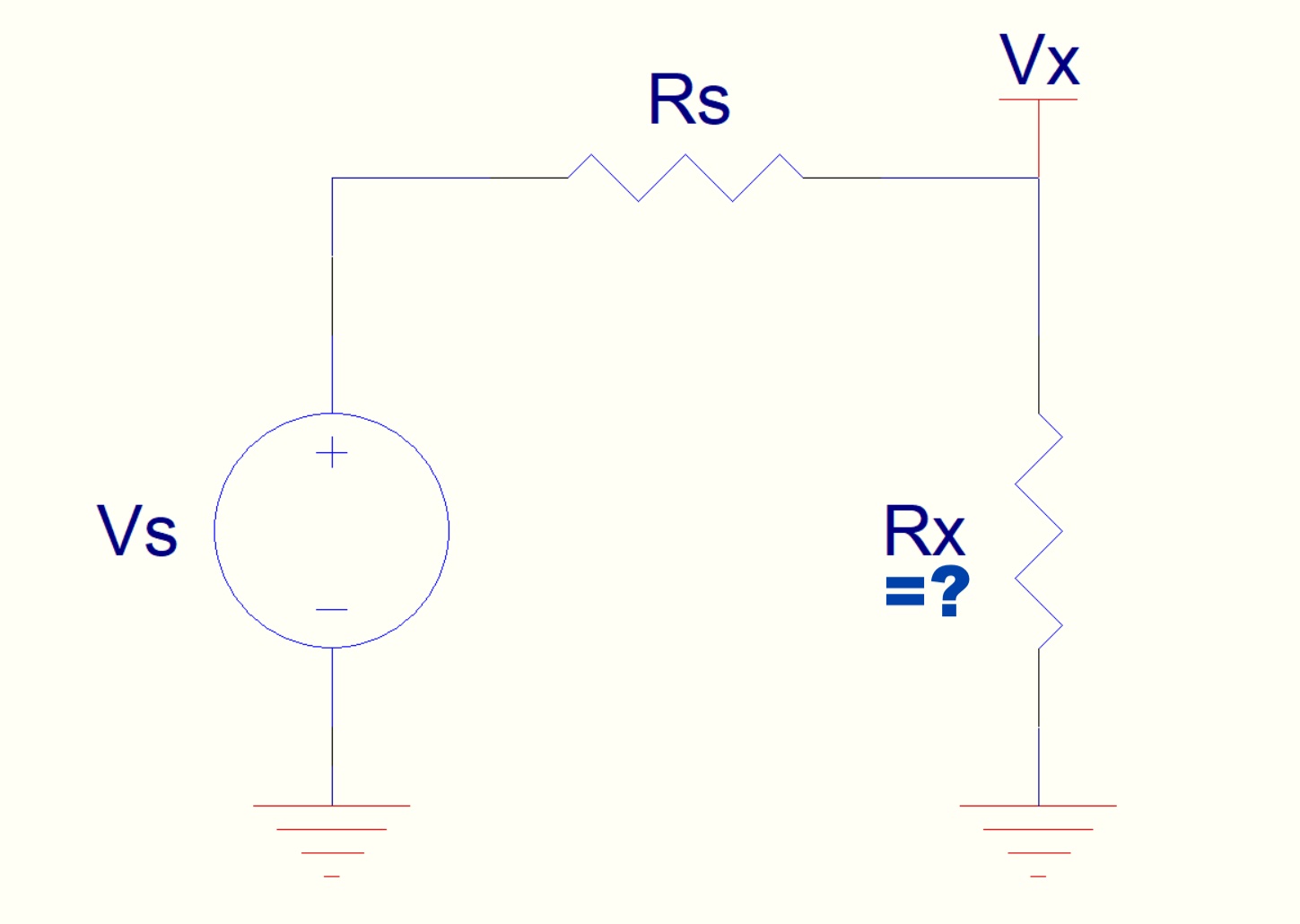Theory
Voltage division is a principle used in electrical circuits to determine the amount of voltage that is present across each component of a circuit when multiple components are connected in series. The principle is based on Ohm's law, which states that the current through a conductor between two points is directly proportional to the voltage across the two points.
In a series circuit, the total voltage is divided among the components in proportion to their resistance. This means that the voltage drop across each component is proportional to its resistance. Mathematically, we can express this relationship using Ohm's law: V = IR, where V is the voltage drop across a component, I is the current flowing through the component, and R is the resistance of the component.
Suppose we have a circuit with two resistors in series, Source Resistor Rs and Divider Resistor Rx, and a voltage source Vs. The total resistance of the circuit is Req = Rs + Rs. According to Ohm's law, the current flowing through the circuit is I = Vtotal/Req
The voltage drop across each resistor can be calculated using Ohm's law as well. The same current I flows through both resistors Rs and Rx. So, the voltage drop across Rx is Vx = I*Rx, and the voltage drop across Rs is Vs-Vx = I*Rs. The total voltage drop across both resistors is Vtotal = Vs+ Vx = I*(Rs + Rx)
Therefore, the voltage drop across each resistor can be calculated as a fraction of the total voltage by dividing the resistance of each resistor by the total resistance of the circuit.
Mathematically, we can express the Voltage Division Formula as:
Vx = Vs(Rx/(Rx+Rs))
Vs = Vx((Rs+Rx)/Rx)
Rs = Rs((Vs-Vx)/Vx)
Rx = Rs(Vx/(Vs-Vx))
This is the principle of voltage division, where the total voltage is divided among the components in proportion to their resistance.
The Voltage Divider Calculator uses the equations above to find each parameter that's required as long as three out of four of the parameters are provided.



